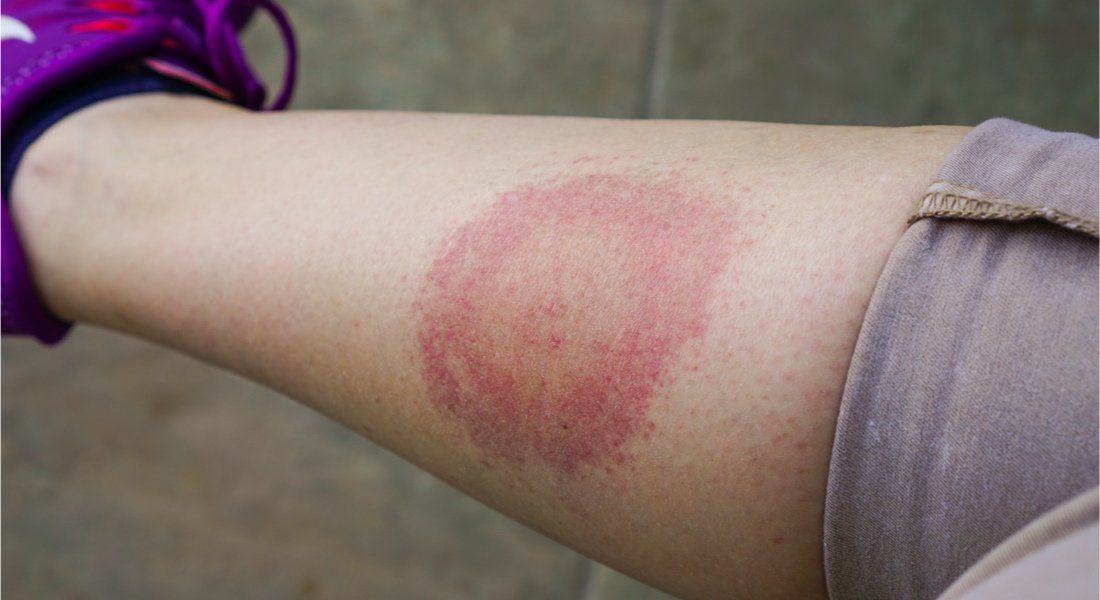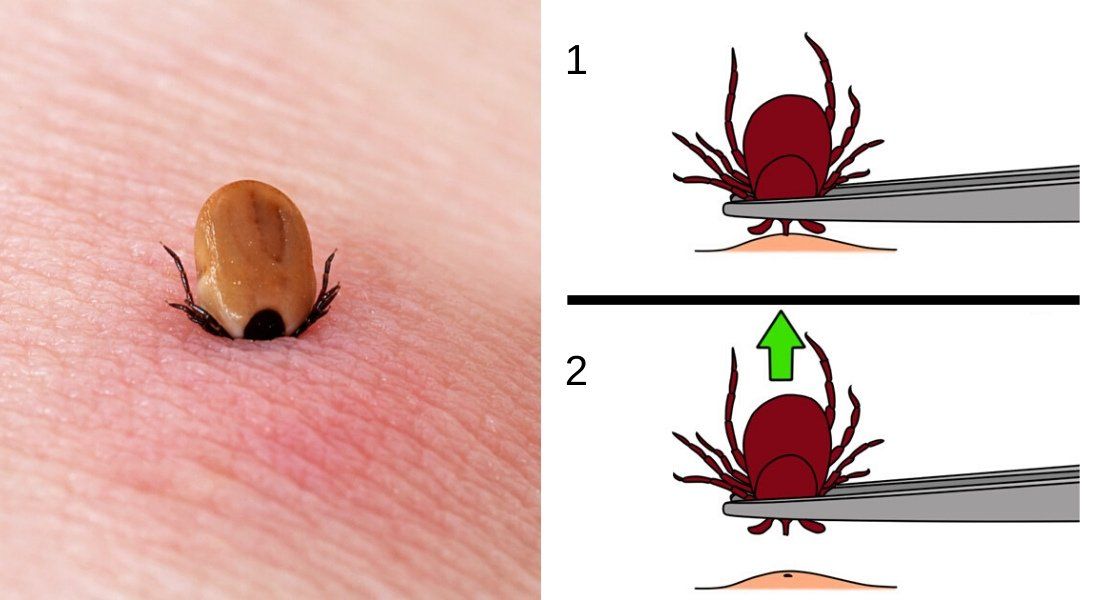How can you protect yourself from ticks and Lyme disease?
A tick is a mite found particularly in wooded and damp areas, tall grasses and clumps of dead leaves.
There are various specimens in Quebec, but only the Ixodes scapularis tick, better known as the "deer tick", can transmit Lyme disease.
What is Lyme disease? What are its symptoms? How to protect yourself and what to do in the event of a tick bite?
Here are the answers to your questions.
What is Lyme disease?

Lyme disease is an infectious, non-contagious disease that can be transmitted by the bite of a tick infected with the Borrelia bacteria.
As mentioned above, there is only one kind of tick that can carry this bacteria and not all of this group are carriers. So just because you get bitten by a tick doesn't mean you will automatically get Lyme disease.
However, vigilance is required because the first symptoms appear within 3 to 30 days after the bite of the infected tick.
Symptoms of Lyme disease
Lyme disease is not always easy to diagnose because the symptoms, often too common, can appear several weeks after the bite.
The most common symptoms are:
- Appearance of a red circular plaque around the bite spot, called erythema migrans (affects 60 to 80% of cases)
- Fever
- Tired
- Headache
- Aches
- Chills
Treatment
It is essential that the disease is diagnosed quickly. When it is the case, it is treated well with antibiotics prescribed by a doctor.
If you have symptoms of Lyme disease after seeing a bite or having visited a high risk area, don't delay your visit to a healthcare professional.
Unfortunately, when the disease is not caught in time, the bacteria can travel into the bloodstream, cause other symptoms and develop into serious health problems.
How to protect yourself from ticks?

A few simple steps can protect you from tick bites.
Although vigilance is essential at all times, you should know that there are some regions more at risk than others.
The National Institute of Public Health of Quebec maintains a Lyme disease acquisition risk map (in French only) that shows the places where these famous ticks are found in Quebec.
 Before your outdoor activity
Before your outdoor activity
It is recommended that you wear long-sleeved clothing and tuck your pants into your socks. Wearing light-colored clothing can also make it easier to spot ticks.
It will also be necessary to apply on your clothes and your skin (avoiding the face) a mosquito repellent (the kind with DEET ideally). It will also protect you from mosquitoes while you are in Canada!
 During your outdoor activity
During your outdoor activity
Stay on the trails, avoid tall grass, and apply repellant regularly.
 After your outdoor activity
After your outdoor activity
Ideally, take a shower within 2 hours of your activity and carefully examine your body.
They can get caught anywhere: don't forget to look closely at areas like the scalp, ear canals or genitals.
Repeat the inspection a few hours later or the next day because if a small larva has bitten you, it will be more visible once soaked in blood ...
Use a mirror for parts of your body that you cannot inspect on your own, or have someone look at it.
What to do in case of a tick bite?

Did a tick take you for its ultimate feast?
Here's how to get rid of it:
- Using a tick puller or tweezers, gently grasp the tick as close to the skin as possible.
- Pull gently but firmly. Take it slow, this is not about leaving its head there, as you risk creating an infection or forming a cyst.
- Cleanse your skin with soap and water, and wash your hands.
Take action as soon as you notice the bite because the longer the tick stays, the greater the risk of contracting Lyme disease.
Keep the tick in an airtight container and write the date of the bite and the part of the body that was bitten on it. This could be useful if you need to see a doctor.
What you should not do
Infectious agents are found in the tick's saliva, so the tick should not be squeezed between your fingers at the risk of bursting it.
The use of alcohol, ether or oil is also to be avoided.
To conclude, if you are vigilant and follow these tips, you should come back from your walk with only great memories in mind!
If you have any questions and/or suggestions, feel free to leave them in the comments box below.


























Leave a comment
Répondre à: -
delete my replyYour e-mail address will not be shared